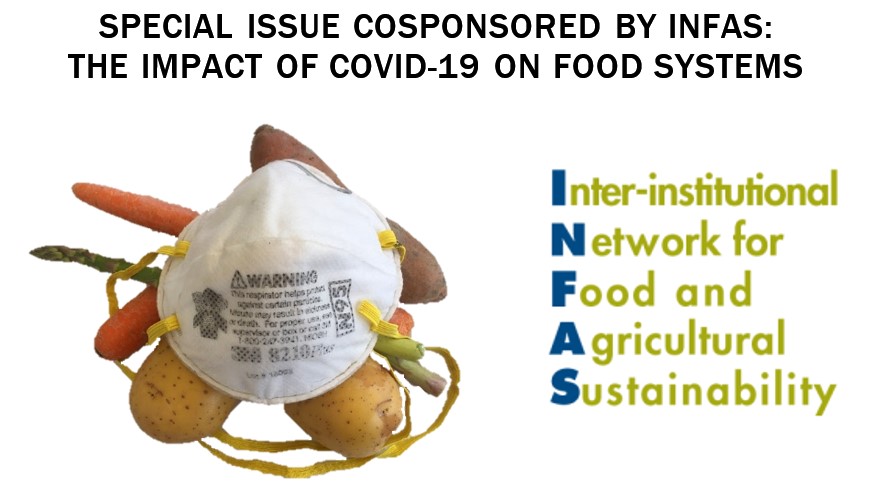Introducing an innovative design to examine human-environment dynamics of food deserts responding to COVID-19
DOI:
https://doi.org/10.5304/jafscd.2021.102.037
Keywords:
Food Insecurity, Food Desert, COVID-19, Pandemic, Food Systems, Integrated DesignAbstract
Food desert communities face persistent barriers in accessing affordable fresh and healthy foods, particularly for the underserved and limited-resourced minority population. This research brief proposes an integrated design concept examining human-environment dynamics of food deserts to identify strategies that would provide effective planning to prevent, prepare for, or respond to disruptive events such as natural disasters or pandemics in the future. The North Carolina example we describe identifies the potential overlapping areas between food deserts and number of COVID-19 cases to demonstrate how an unpredictable event could exacerbate public health in food desert communities to a greater extent than in communities with better food access, availability, and accessibility. The improved understanding of food systems could help in addressing unprecedented challenges such as those due to the COVID-19 crisis.
Metrics

Downloads
Published
How to Cite
Issue
Section
Categories
License
The copyright to all content published in JAFSCD belongs to the author(s). It is licensed as CC BY 4.0. This license determines how you may reprint, copy, distribute, or otherwise share JAFSCD content.













